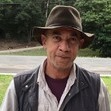@ Home Film Development
-
Recently Browsing 0 members
- No registered users viewing this page.
-
Similar Content
-
- 26 replies
- 817 views
-
- 11 replies
- 757 views
-
on the way home
By kkm,
- 1 reply
- 199 views
-
- 17 replies
- 1,818 views
-
- 164 replies
- 4,456 views
-



Recommended Posts
Join the conversation
You can post now and register later. If you have an account, sign in now to post with your account.
Note: Your post will require moderator approval before it will be visible.